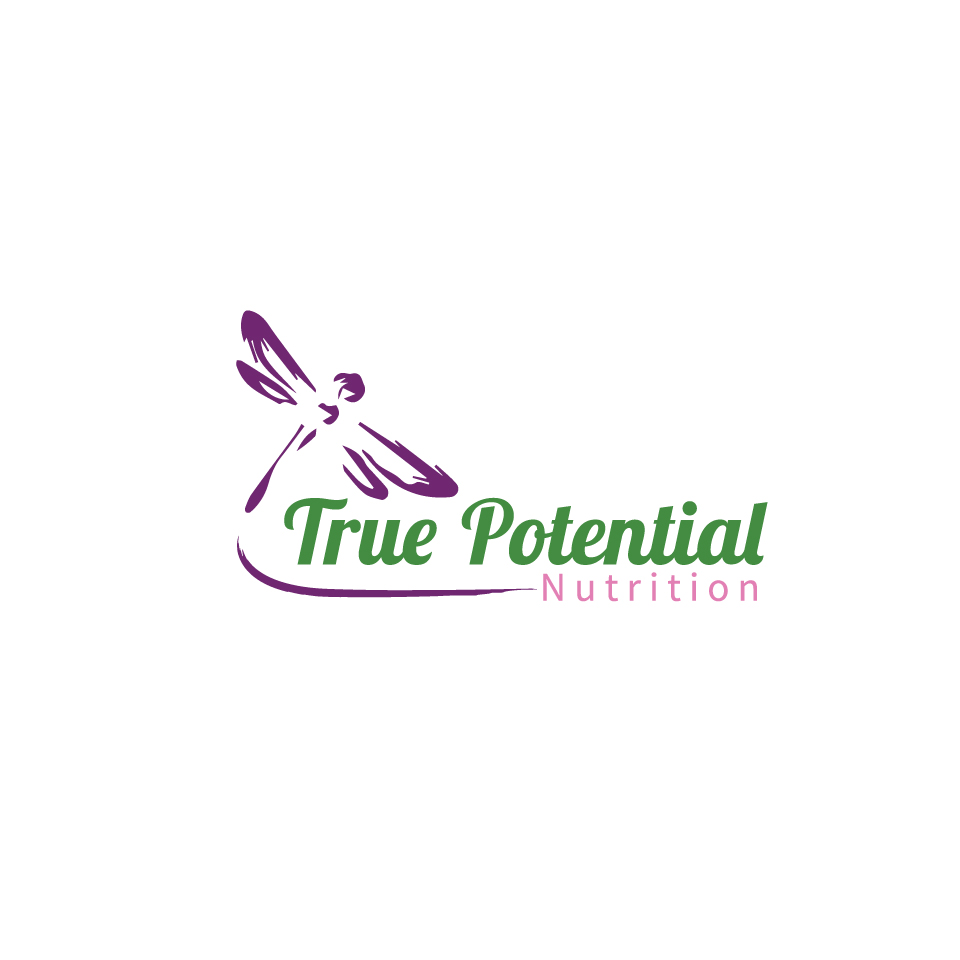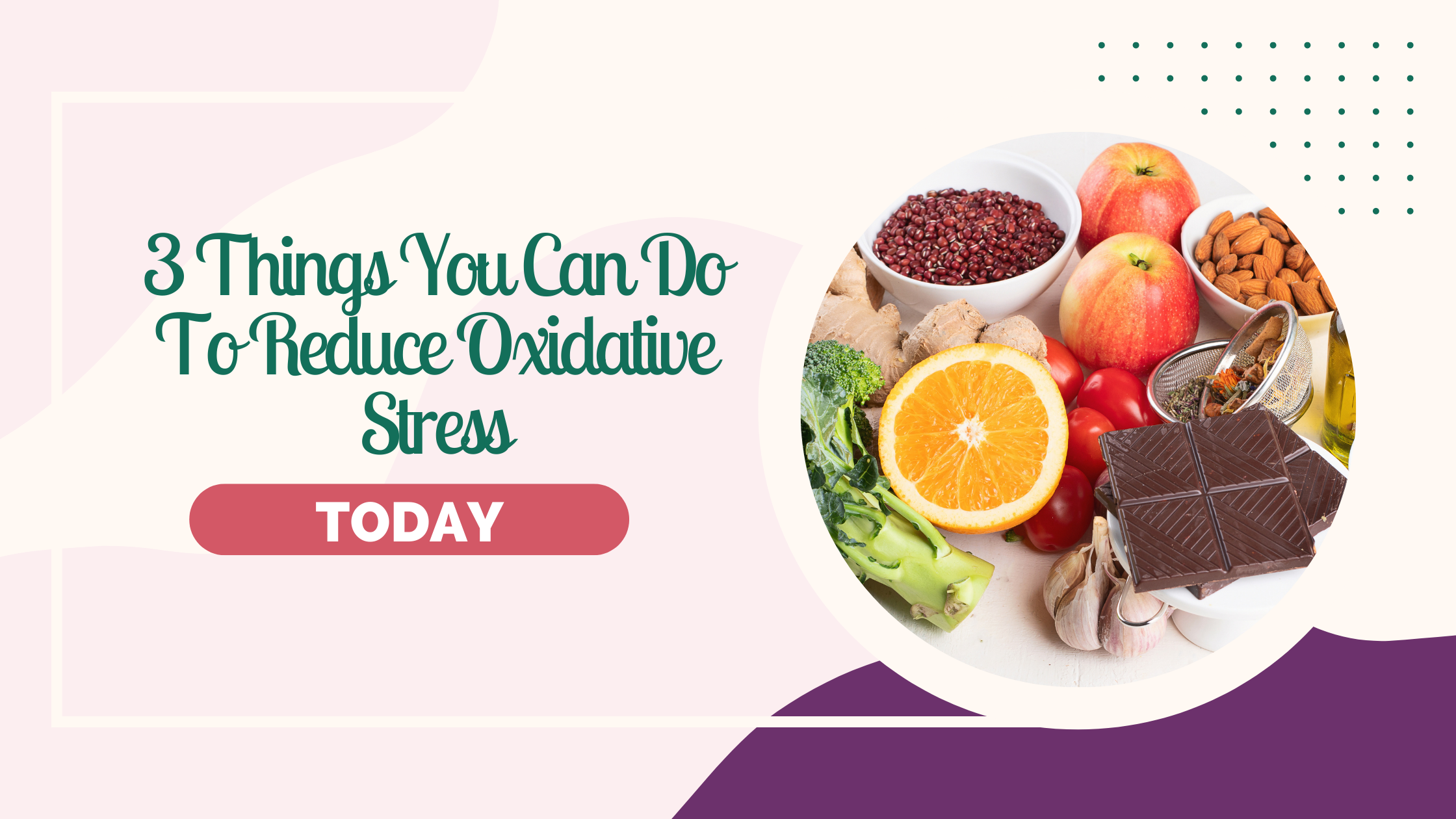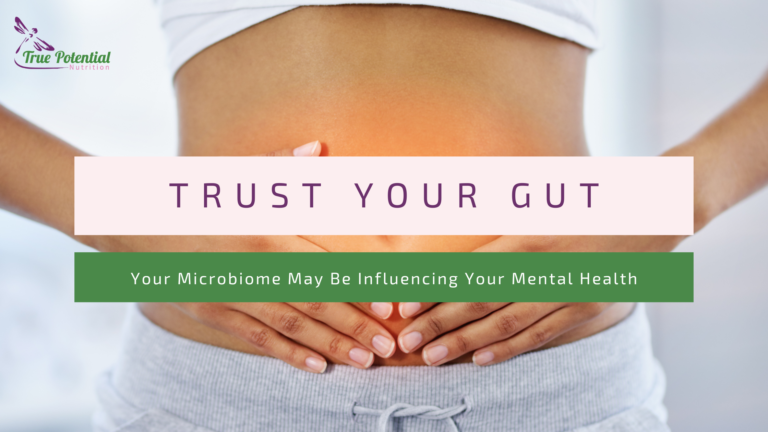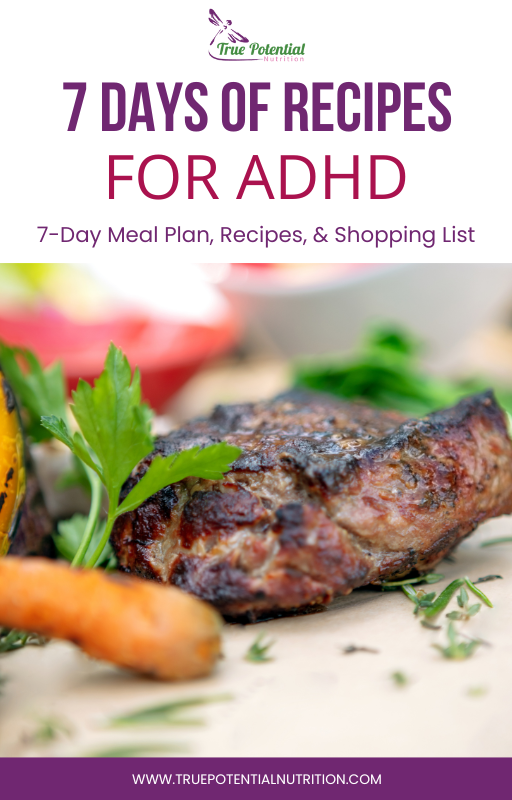By Danielle MacDowell

Main Takeaways
- Reactive Oxygen species (ROS) are unstable compounds that are created from oxygen; they are highly reactive and can cause serious damage to the body when they are not balanced out by antioxidants.
- Oxidative stress is essentially the damages caused by ROS.
- UV radiation (UVR), smoking, and air pollution are the primary environmental sources of ROS production. While mitochondria, our energy producing organelles, are our number one internal source of ROS production.
- When the body has more ROS than it can handle, negative health outcomes, such as protein degradation, cellular damage, DNA damage, mutations, and tumors can occur.
- Decreasing toxic exposures, increasing antioxidant load, enhancing mitochondrial health, and adjusting one’s eating patterns can greatly reduce oxidative stress within the body.
Table of Contents
The term “reactive oxygen species” (ROS) often gets tossed around in the health literature when speaking about antioxidants and oxidative stress. But how many of us actually understand what ROS actually are or the true impact of oxidative stress in our bodies?
Reactive Oxygen Species & Oxidative Stress
Reactive Oxygen species (ROS) are unstable compounds that are created from oxygen; they are highly reactive and can cause serious damage to the body when they are not balanced out by antioxidants.
You have likely heard the term oxidative stress. Oxidative stress is essentially the damage caused by ROS.
To understand the term oxidative stress better, consider how rust accumulates on a nail. Rust is the result of oxidation; it is the byproduct of oxygen and water interacting with metal. Well, believe it or not, similar chemical reactions occur in our body. Like the nail, when cells interact with oxygen species in the body, they become vulnerable to deterioration.
Not only is oxidative stress destructive to our cells and tissues, but research has shown that it can further exacerbate certain disease states, including cardiovascular disease, diabetes, chronic kidney disease, and dementia. [1]
How Does Oxidative Stress Build Up in Our Bodies?
UV radiation (UVR), smoking, and air pollution are the primary environmental sources of ROS production. However, our internal energy-producing machines, our mitochondria, are the primary internal sources of ROS-production. [2] Similar to the way cars produce exhaust fumes, our mitochondria produce their own set of fumes in the form of reactive oxygen species. Being that there are thousands of mitochondria in each cell and there are trillions of cells in the body, you can imagine how quickly the “fumes” can accumulate.
Reactive Oxygen Species Aren’t Always the Enemy
Our body naturally and consistently produces ROS, as these are natural byproducts produced from our internal energy producing mechanism, the electron transport chain (ETC).
In spite of their reputation, ROS actually play a fundamental role in our health. They help to maintain tissue health by modulating cellular signaling, differentiation, cell damage, and cell death. [3] Moreover, moderate ROS exposure can result in positive stress-adaptations that can actually end up helping the organism in the future through a process known as hormesis.
However, when the body has more ROS than it can handle, negative health outcomes, such as protein degradation, cellular damage, DNA damage, mutations, and tumors can occur. Because of these associated negative health outcomes, the positive aspects of ROS are often overshadowed.
As you can see, ROS are not categorically bad. However, it is important that the body maintains a tightly regulated system of checks and balances to keep ROS controlled and oxidative stress at a minimum.
3 Methods to Reduce Oxidative Stress
1. Decrease toxic exposure
2. Increase antioxidant load
3. Enhance mitochondrial health
Method #1: Decrease Toxic Exposure
Remember, UV radiation (UVR), smoking, and air pollution are the primary external sources of reactive oxygen species. So, taking action to limit and reduce these sources are an important step in decreasing the overall oxidative stress load. According to Poljsak [2], important actions to take today include:
- Quit smoking
- Take in right amount of sun exposure (just enough to get enough vitamin D). Too much sun exposure can cause oxidative stress.
- Select a good air filtration system
- Moderate cooking temperatures. Just as we do not want to charr our skin, we should take the same care with our meat. Use moderate heat when cooking food to reduce ROS load. [2]
In addition to limiting ROS exposure, it will be important to increase antioxidant production and consumption.
Method #2: Increase Antioxidant Load
Antioxidants are the nutrients needed to combat the oxidative stress produced by reactive oxygen species.
When the antioxidant load cannot keep pace with ROS production, deleterious effects can occur. Excessive ROS production that is not counterbalanced with adequate antioxidant load can lead to DNA damage, mutations, and even tumors.
Glutathione (GSH) is the primary antioxidant produced within the body. GSH may reduce DNA damage, improve detoxification, and maintain protein balance. Conversely, lack of GSH can result in the advanced progression of disease. [3]
In order to maintain adequate glutathione in our bodies, we must have the raw materials to keep up with production. This includes magnesium, potassium, selenium, glycine, cysteine, glutamic acid, and B vitamins. However, this is no small feat. Many individuals do not have adequate nutrient stores to keep pace with the body’s needs. Busy schedules, food choices, depleted soil, and various health conditions are a few contributing factors that interfere with individuals getting their nutrient needs met. So, bringing awareness to foods that are rich in antioxidants is especially important. Fortunately, there are a number of antioxidant-rich foods we can add to our plate today.
Some of the more well-known antioxidants include vitamin A, E, and C. When thinking about how to get antioxidants into your body, think color, color and more color! The more color variety you have on your plate the better. So, next time you are at the grocery store, reach for those vibrant reds, oranges, yellows, and purples that can be found in peppers, squashes, citrus fruits, and berries.
When you opt for these colorful fruits and vegetables, not only are you getting a healthy dosage of antioxidants to quell the ROS in your body, but you are also loading your body up with other important vitamins and minerals!
Antioxidant Food Sources
Think reds, yellows, and oranges. Typically, the more colorful your plate is the higher the nutrient load and the better equipped you will be to combat oxidative stress!
- Vitamin C: Oranges, lemons, limes, strawberries, cantaloupe, grapefruit, kiwi, mango, papaya, broccoli, red and green peppers, cabbage, collard greens, tomatoes, asparagus, potatoes
- Vitamin E: Whole grains, wheat germ, leafy greens, asparagus, nuts and seeds, tomato sauce, spinach, swiss chard, turnip greens, peanut, peanut butter, avocado
- Beta Carotene: Kale, spinach, sweet potatoes, carrots, broccoli, butternut squash, cantaloupe, red and yellow peppers
- Selenium: Brazil nuts, seafood, organ meat
Method #3: Enhance Mitochondrial Health
Mitochondrial Dysfunction & Oxidative Stress
Mitochondria are central to energy production and therefore an organism’s health. However, with age, mitochondrial generation and performance degrade, which in turn compromises energy production and increases reactive oxygen species (ROS) production. When this happens, individuals are more prone to several diseases, including:
- Alzheimer’s disease (AD)
- Autism
- Cardiovascular disease
- Chronic fatigue syndrome
- Dementia
- Diabetes
- Migraines
- Parkinson’s disease (PD). [4]
Consider the fact that mitochondria are our body’s powerhouses, producing enough ATP to sustain life, it comes as no surprise that mitochondrial dysfunction can severely impact our overall state of wellbeing.
At this point, you may be wondering what causes our mitochondria to weaken. Well, there are a number of variables that contribute to this degeneration, including:
- Aging
- Nutritional deficiencies
- Genetics
- Toxic metals
- Pollutants
- Alcohol
While we do not have complete control over all of these variables, we can certainly reduce the impact that many of these contributors have on our body by taking action to support our mitochondria.
Mitochondrial Support
As you can see, prioritizing mitochondrial health is essential to our overall wellbeing. Fortunately, many of the action steps we take to reduce oxidative stress also support mitochondrial health. For example, we can limit our exposures to exogenous toxic sources. Also, eating a balanced diet rich in antioxidants reaps several health-related rewards, including dampening the effects of the aging process, supporting detoxification, and increasing immune functioning. Additionally, consuming foods rich in mitochondrial-supporting nutrients, such as manganese, CoQ10, vitamin E, and glutathione, can directly influence mitochondrial health and combat reactive oxygen species.
Exercise is also an extremely important tool in mitochondrial health; resistance training is particularly beneficial in increasing ATP production, even for those who have diseases directly related to mitochondrial dysfunction. [5] That being said, it is important to note that excessive exercise can have the opposite effect and generate oxidative stress within the body. As with all things related to our health, striking a balance is always going to be a key element.
Final Thoughts and Main Takeaways
Reactive Oxygen species (ROS) are unstable compounds that are created from oxygen; they are highly reactive and can cause serious damage to the body when they are not balanced out by antioxidants. This is known as oxidative stress. UV radiation (UVR), smoking, and air pollution are the primary environmental sources of ROS production. However, ROS are not just produced outside of our body, they are regularly generated inside of our body as well. Our internal energy-producing machines, our mitochondria, are the primary internal sources of ROS-production.
Surprisingly, ROS are not categorically bad. However, it is important that the body maintains a tightly regulated system of checks and balances to keep ROS controlled. This can be done by limiting environmental exposures, maintain a healthy reserve of antioxidants, supporting the mitochondria, and eating a nutrient-rich diet.
- Liguori I, Russo G, Curcio F, et al. Oxidative stress, aging, and diseases. Clin Interv Aging. 2018;13:757-772. Published 2018 Apr 26. doi:10.2147/CIA.S158513
- Poljsak B. Strategies for reducing or preventing the generation of oxidative stress. Oxid Med Cell Longev. 2011;2011:194586. doi:10.1155/2011/194586
- Harris IS, DeNicola GM. The Complex Interplay between Antioxidants and ROS in Cancer. Trends Cell Biol. 2020;30(6):440-451. doi:10.1016/j.tcb.2020.03.002
- Pizzorno J. Mitochondria-Fundamental to Life and Health. Integr Med (Encinitas). 2014;13(2):8-15.





